Life & Faith
St Gregory the Theologian
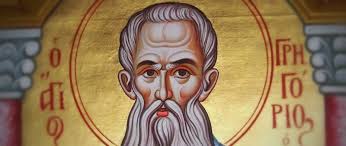 The fabric of Christendom was woven into its strength and beauty of character by the threads of men such as St. Gregory the Theologian, who became one of the four great doctors of the Church during the 4th century AD, along with Saints Basil the Great, John Chrysostom and Athanasios the Great. He is further remembered as one of the three so-called Cappadocian Fathers, an honour he shares with Sts Basil and Gregory of Nyssa. He is also recognised as the champion of Orthodoxy against the heretical doctrine of Arianism.
The fabric of Christendom was woven into its strength and beauty of character by the threads of men such as St. Gregory the Theologian, who became one of the four great doctors of the Church during the 4th century AD, along with Saints Basil the Great, John Chrysostom and Athanasios the Great. He is further remembered as one of the three so-called Cappadocian Fathers, an honour he shares with Sts Basil and Gregory of Nyssa. He is also recognised as the champion of Orthodoxy against the heretical doctrine of Arianism.
Synaxis of the Holy Glorious Prophet, Forerunner and Baptist John
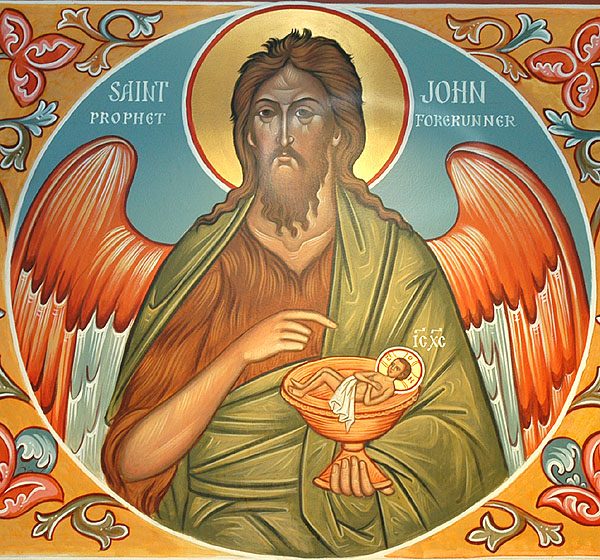 In the Orthodox Church it is customary, on the day following the Great Feasts of the Lord and the Mother of God, to remember those saints who participated directly in the sacred event. So, on the day following the Theophany of the Lord, the Church honors the one who participated directly in the Baptism of Christ, placing his own hand upon the head of the Savior.
In the Orthodox Church it is customary, on the day following the Great Feasts of the Lord and the Mother of God, to remember those saints who participated directly in the sacred event. So, on the day following the Theophany of the Lord, the Church honors the one who participated directly in the Baptism of Christ, placing his own hand upon the head of the Savior.
Saint John, the holy Forerunner and Baptist of the Lord, whom the Lord called the greatest of the prophets, concludes the history of the Old Testament and opens the era of the New Testament. The holy Prophet John bore witness to the Only-Begotten Son of God, incarnate in the flesh. Saint John was accounted worthy to baptize Him in the waters of the Jordan, and he was a witness of the Theophany of the Most Holy Trinity on the day of the Savior’s Baptism.
St. Nicholas, Bishop of Myra + December 6
The truth of things revealed thee to thy flock as a rule of faith, a model of meekness, and a teacher of temperance. Therefore thou hast won the heights by humility, riches by poverty. Holy Father Nicholas, intercede with Christ our God that our souls may be saved.
Saint Sabbas the Sanctified
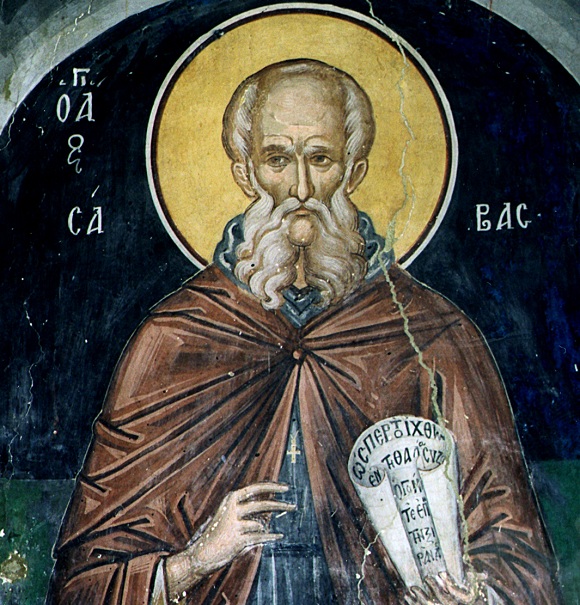 The unknown village of Mutalaska, in the province of Cappadocia, became famous through this great luminary of the Orthodox Church. Sava was born there of his parents John and Sophia. At the age of eight, he left the home of his parents and was tonsured a monk in a nearby monastic community called Flavian's. After ten years, he moved to the monasteries of Palestine and remained longest in the Monastery of St. Euthymius the Great (January 20) and Theoctistus. The clairvoyant Euthymius prophesied of Sava that he would become a famous monk and a teacher of monks and that he would establish a lavra greater than all the lavras of that time. After the death of Euthymius, Sava withdrew to the desert, where he lived for five years as a hermit in a cave shown to him by an angel of God.
The unknown village of Mutalaska, in the province of Cappadocia, became famous through this great luminary of the Orthodox Church. Sava was born there of his parents John and Sophia. At the age of eight, he left the home of his parents and was tonsured a monk in a nearby monastic community called Flavian's. After ten years, he moved to the monasteries of Palestine and remained longest in the Monastery of St. Euthymius the Great (January 20) and Theoctistus. The clairvoyant Euthymius prophesied of Sava that he would become a famous monk and a teacher of monks and that he would establish a lavra greater than all the lavras of that time. After the death of Euthymius, Sava withdrew to the desert, where he lived for five years as a hermit in a cave shown to him by an angel of God.
Saint Philaret the Merciful
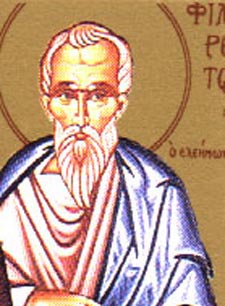 Saint Philaret was born in the beginning of the 8th century in the Paphlagonian region of Asia Minor (now territory of Turkey). He was a rich nobleman, whose righteous parents brought him up in the spirit of love for God and compassion for people. He retained those merits for all of his life. He lived happily with his wife and 3 children (a son and two daughters). Being rich did not harden his heart like it happened to many other people in similar circumstances. On the contrary, he felt compassion towards the poor and cared for them always bearing in mind that faith alone without good deeds is barren. Many paupers, widows and orphans knew him as kind person and generous benefactor.
Saint Philaret was born in the beginning of the 8th century in the Paphlagonian region of Asia Minor (now territory of Turkey). He was a rich nobleman, whose righteous parents brought him up in the spirit of love for God and compassion for people. He retained those merits for all of his life. He lived happily with his wife and 3 children (a son and two daughters). Being rich did not harden his heart like it happened to many other people in similar circumstances. On the contrary, he felt compassion towards the poor and cared for them always bearing in mind that faith alone without good deeds is barren. Many paupers, widows and orphans knew him as kind person and generous benefactor.
Many years passed by, and then through God’s will, St. Philaret was tried by affliction, like in the old days when Righteous Job, the-Much-Suffering, was tested. Quite unexpectedly, Izmail Arabs attacked the area where St.Philaret lived and devastated the land. They captured his slaves, livestock and fields, leaving him with just a house, a small field and a couple of oxen. Without bemoaning, Philaret accept his misfortunes saying, like Job: "God giveth, God taketh away. Blessed be His name for ages."
Sermon on the Entry of the Mother of God into the Temple
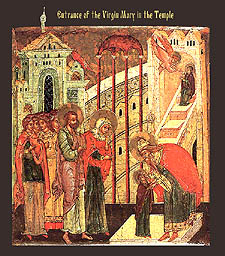 If a tree is known by its fruit, and a good tree bears good fruit (Mt. 7:17; Lk. 6:44), then is not the Mother of Goodness Itself, She who bore the Eternal Beauty, incomparably more excellent than every good, whether in this world or the world above? Therefore, the coeternal and identical Image of goodness, Preeternal, transcending all being, He Who is the preexisting and good Word of the Father, moved by His unutterable love for mankind and compassion for us, put on our image, that He might reclaim for Himself our nature which had been dragged down to uttermost Hades, so as to renew this corrupted nature and raise it to the heights of Heaven. For this purpose, He had to assume a flesh that was both new and ours, that He might refashion us from out of ourselves. Now He finds a Handmaiden perfectly suited to these needs, the supplier of Her own unsullied nature, the Ever-Virgin now hymned by us, and Whose miraculous Entrance into the Temple, into the Holy of Holies, we now celebrate. God predestined Her before the ages for the salvation and reclaiming of our kind. She was chosen, not just from the crowd, but from the ranks of the chosen of all ages, renowned for piety and understanding, and for their God-pleasing words and deeds.
If a tree is known by its fruit, and a good tree bears good fruit (Mt. 7:17; Lk. 6:44), then is not the Mother of Goodness Itself, She who bore the Eternal Beauty, incomparably more excellent than every good, whether in this world or the world above? Therefore, the coeternal and identical Image of goodness, Preeternal, transcending all being, He Who is the preexisting and good Word of the Father, moved by His unutterable love for mankind and compassion for us, put on our image, that He might reclaim for Himself our nature which had been dragged down to uttermost Hades, so as to renew this corrupted nature and raise it to the heights of Heaven. For this purpose, He had to assume a flesh that was both new and ours, that He might refashion us from out of ourselves. Now He finds a Handmaiden perfectly suited to these needs, the supplier of Her own unsullied nature, the Ever-Virgin now hymned by us, and Whose miraculous Entrance into the Temple, into the Holy of Holies, we now celebrate. God predestined Her before the ages for the salvation and reclaiming of our kind. She was chosen, not just from the crowd, but from the ranks of the chosen of all ages, renowned for piety and understanding, and for their God-pleasing words and deeds.

